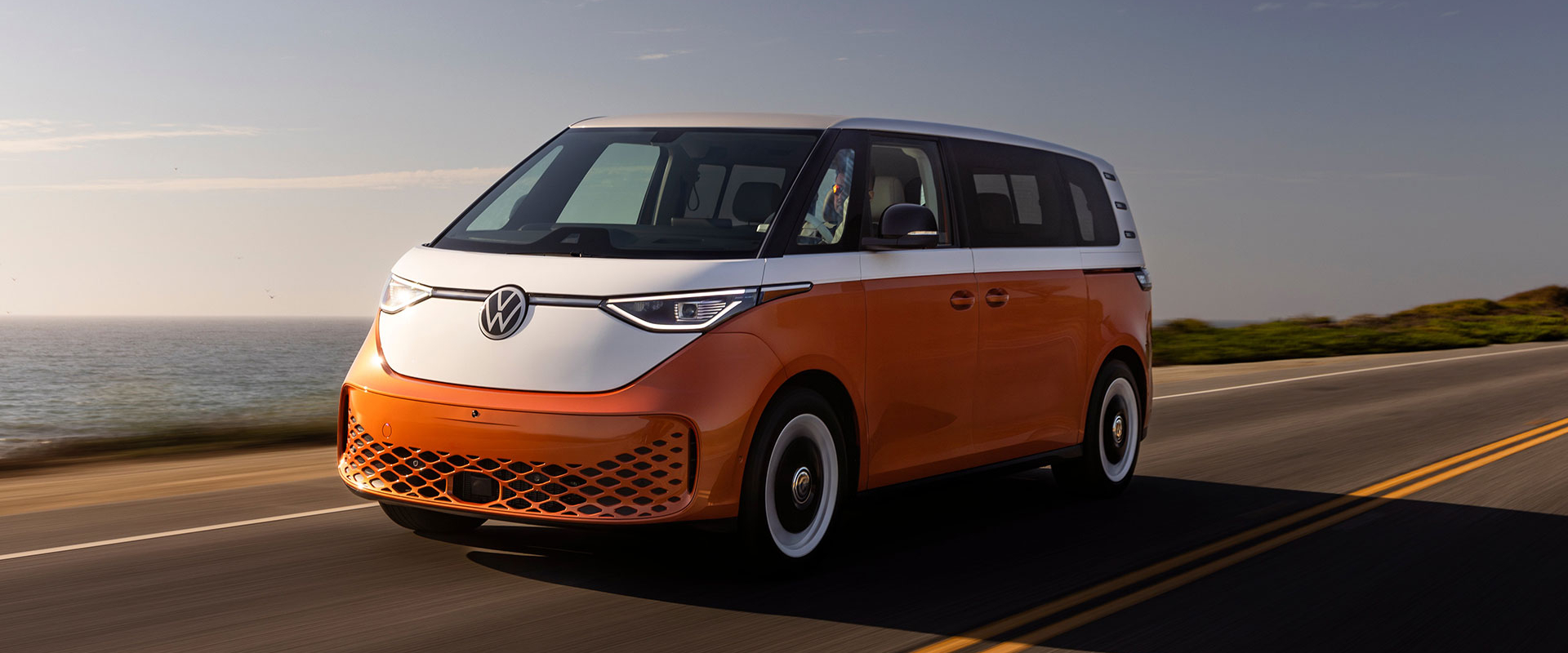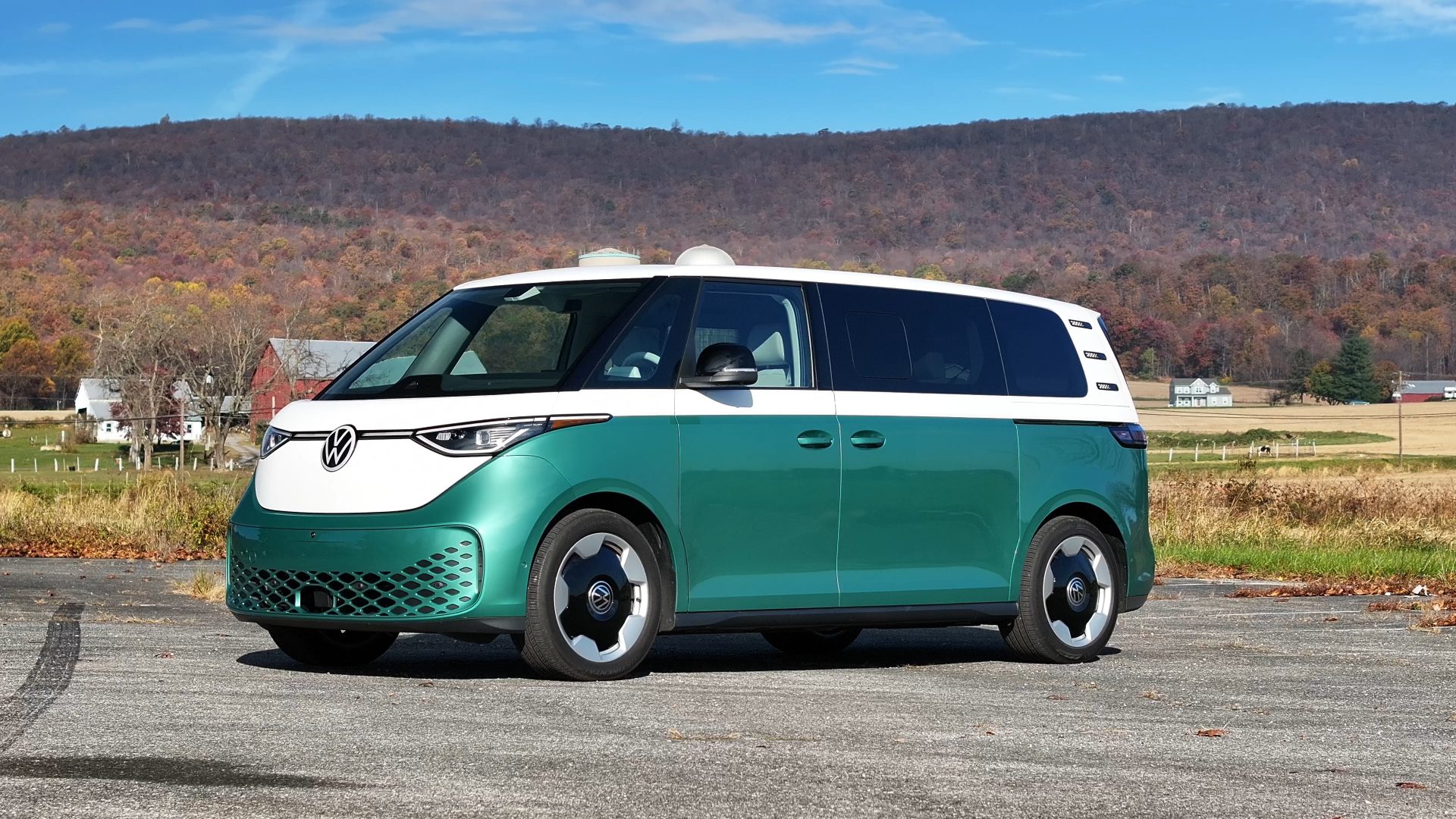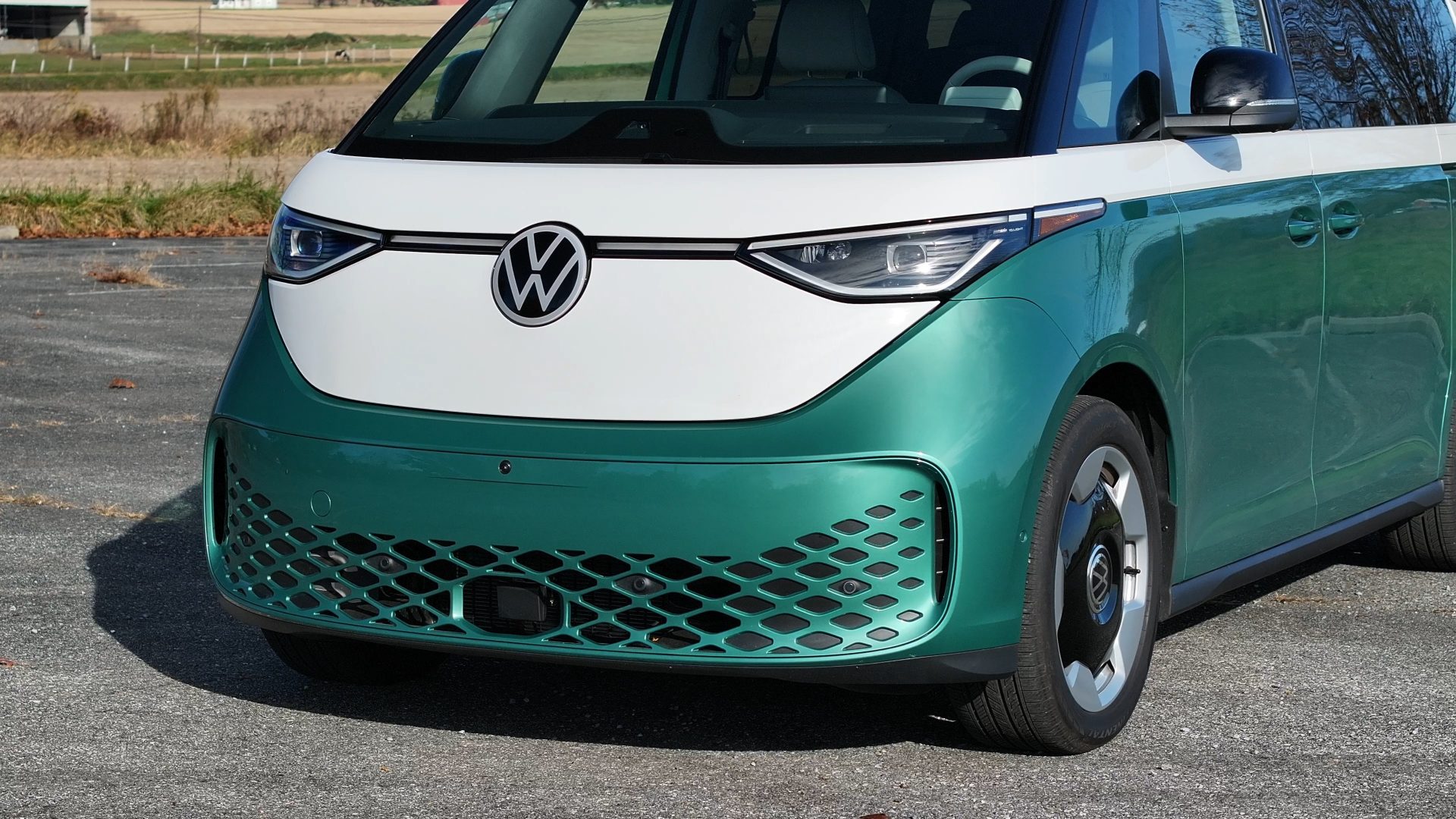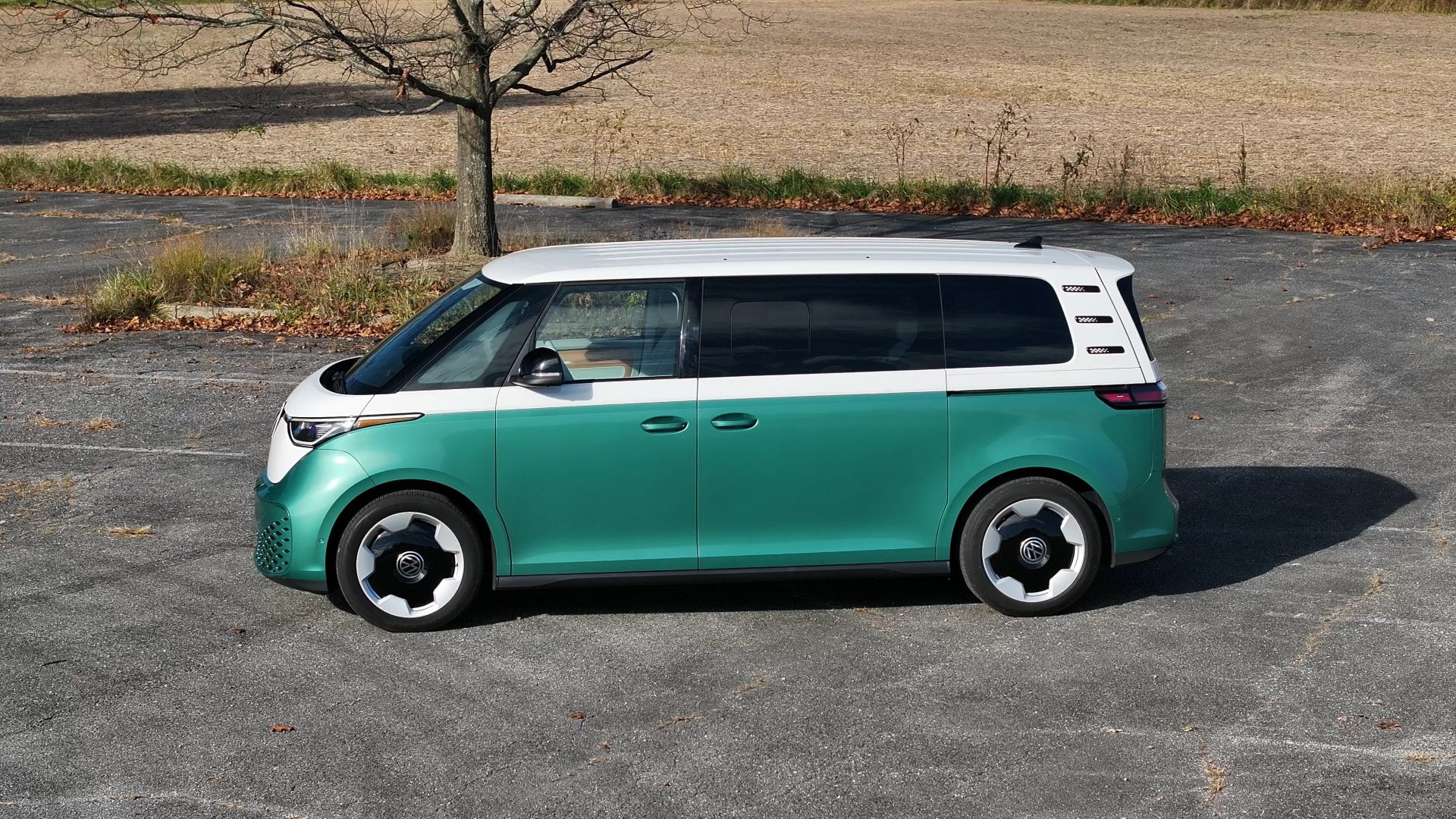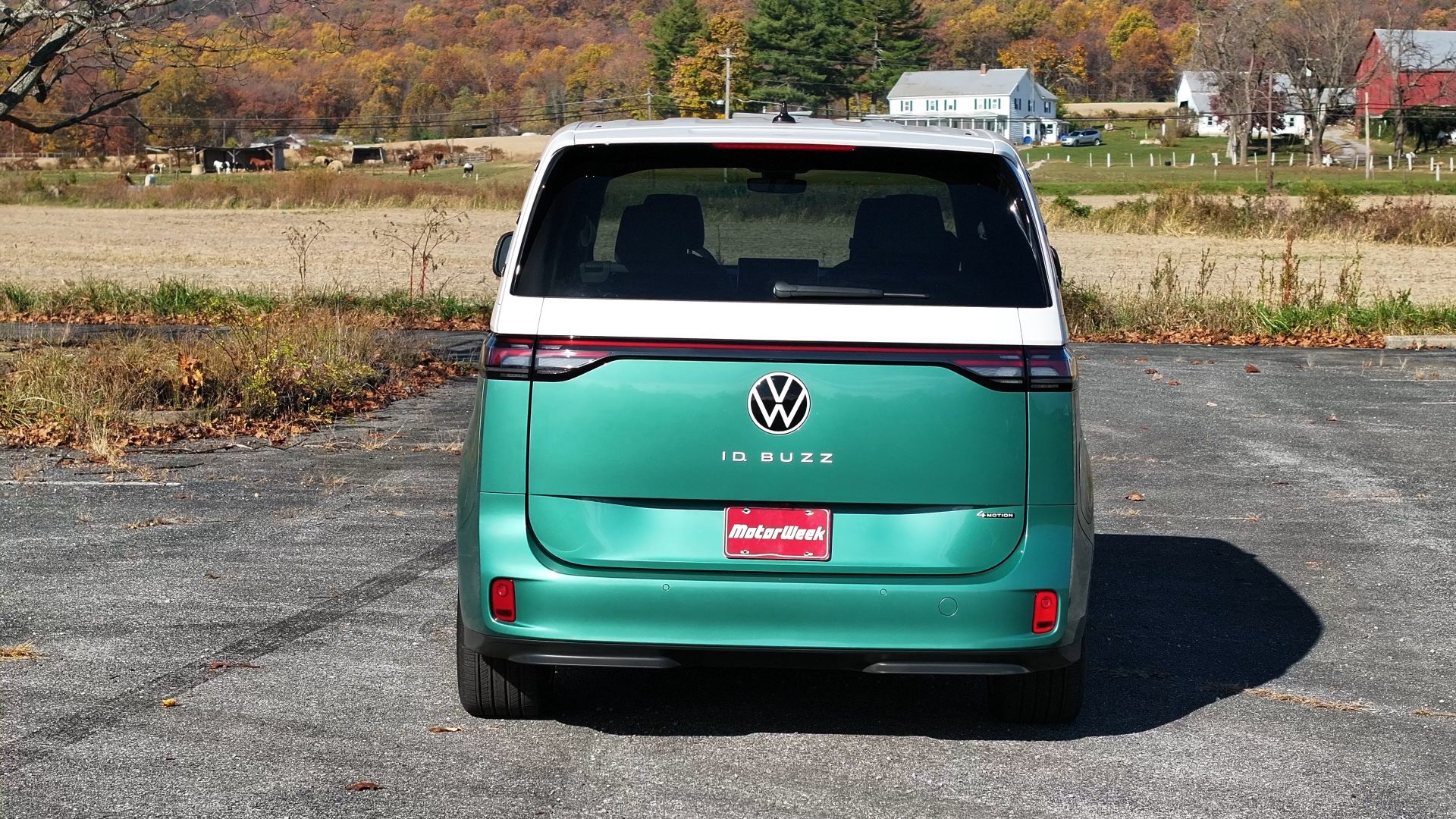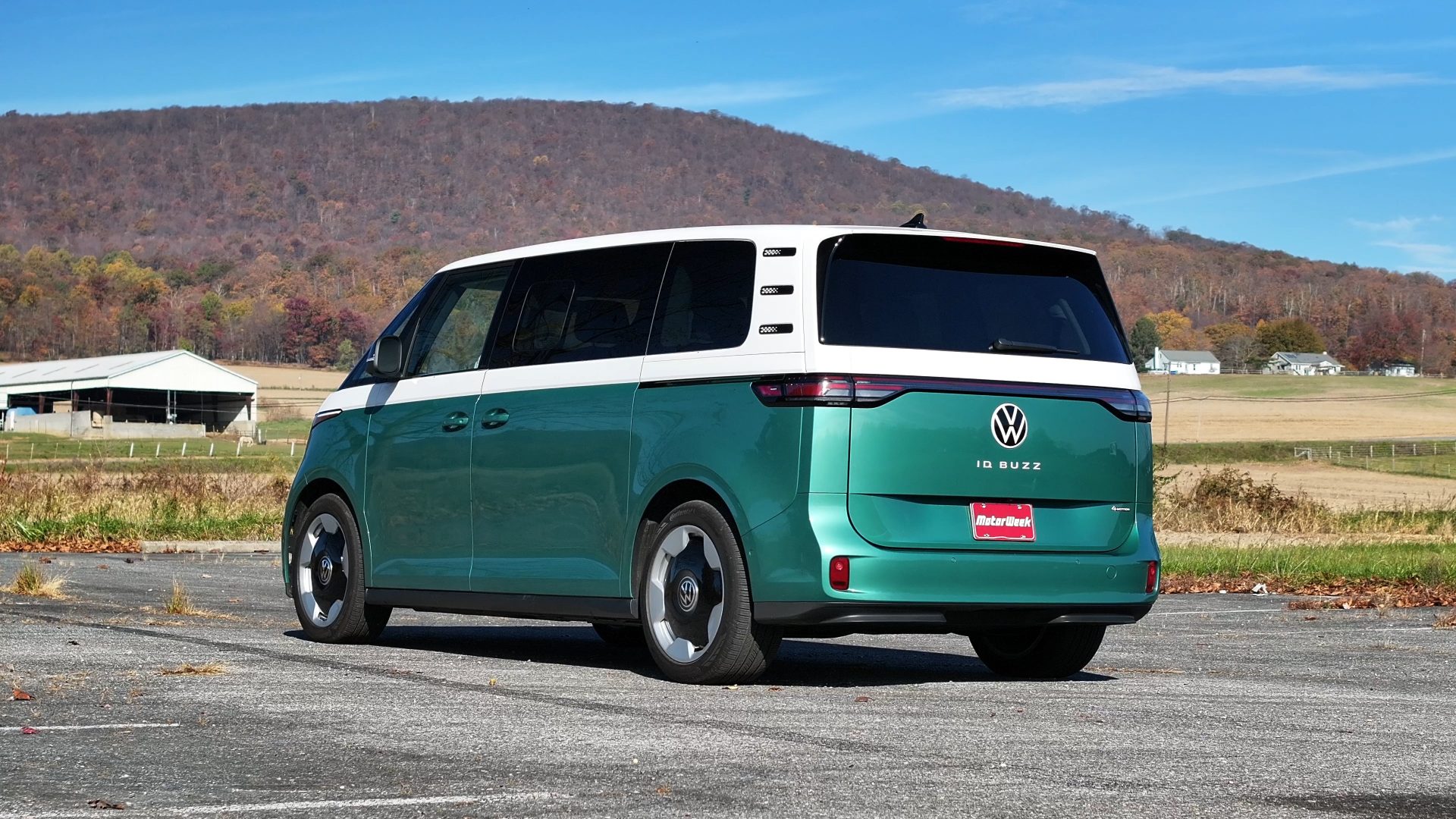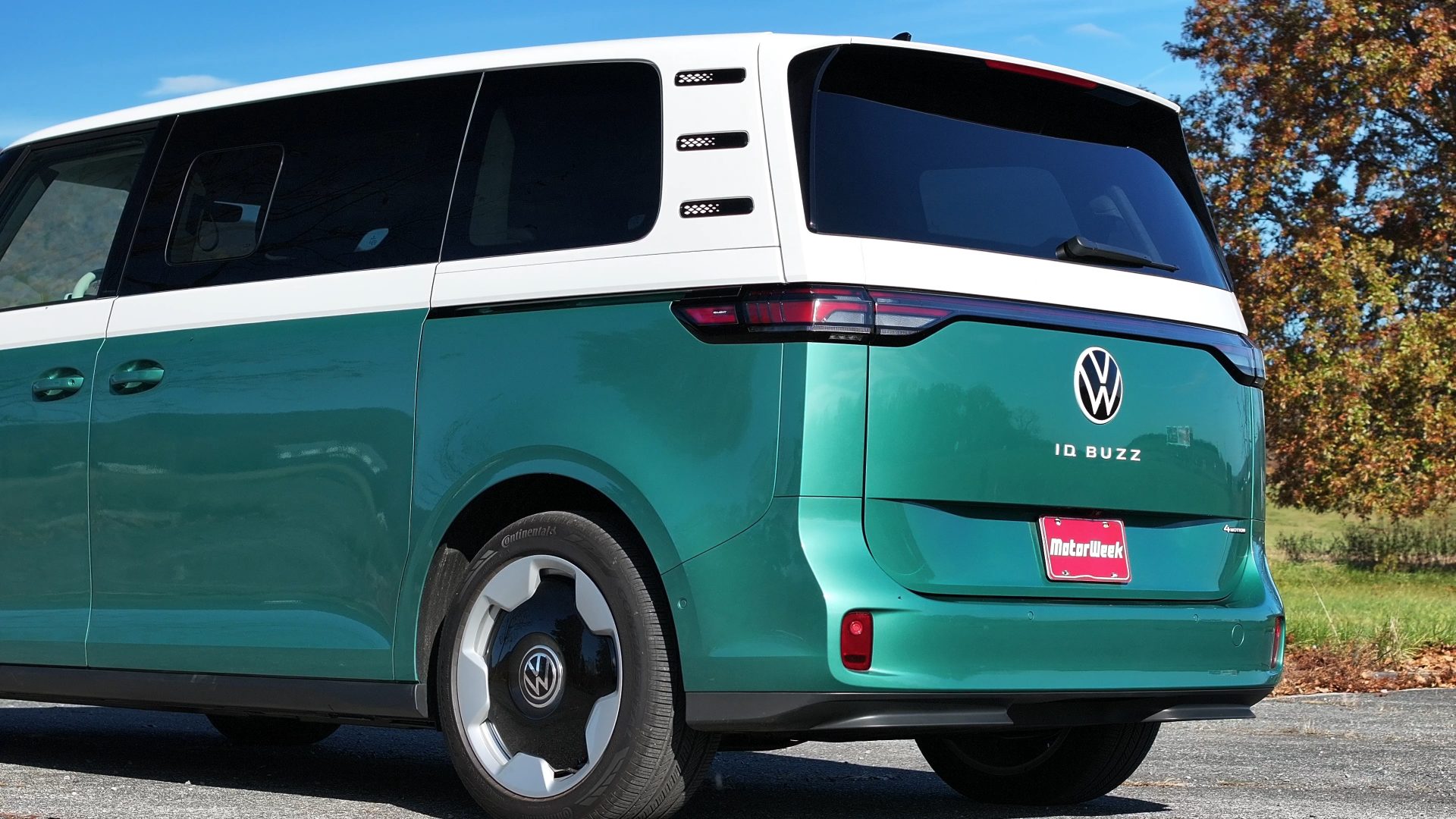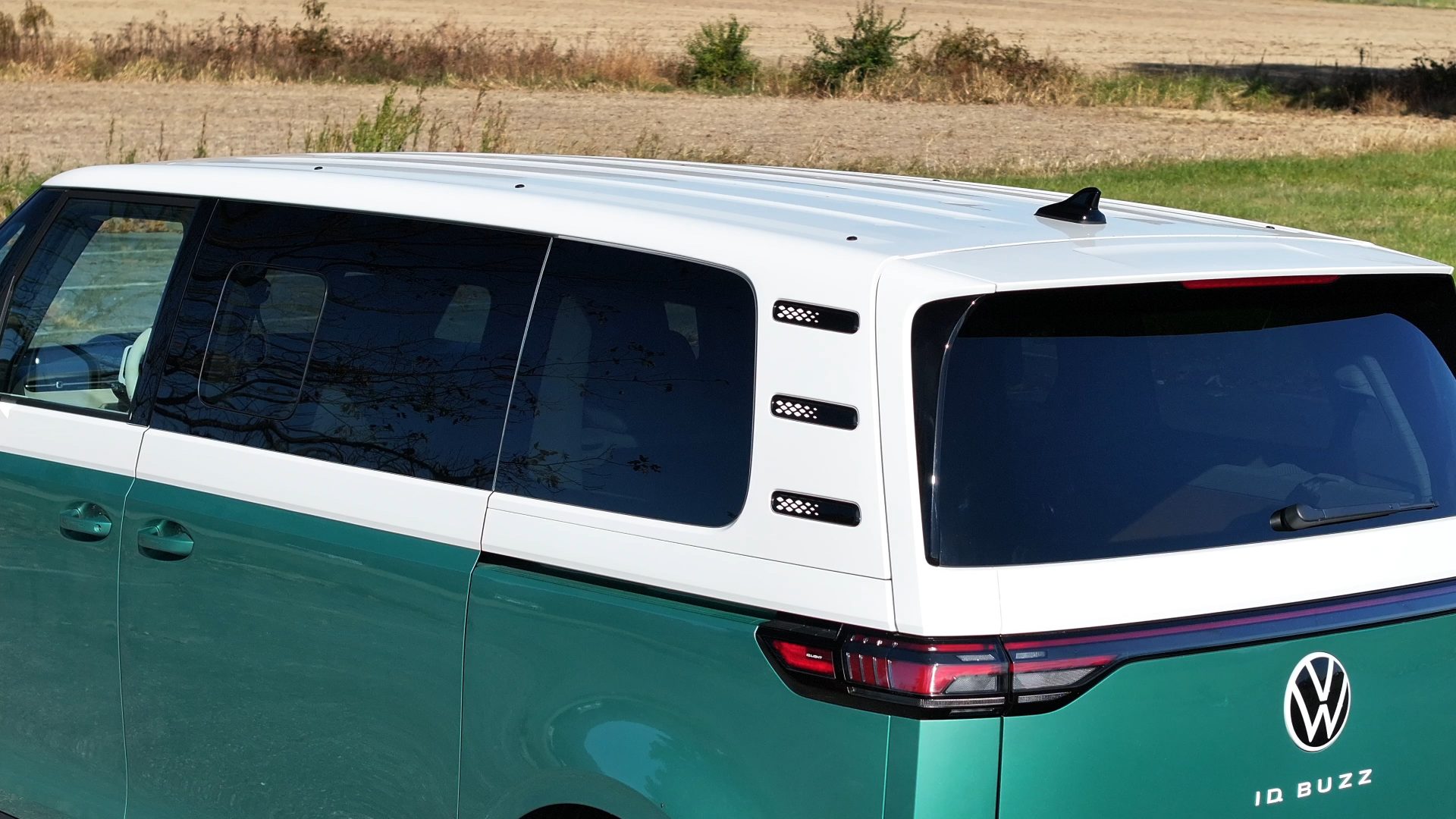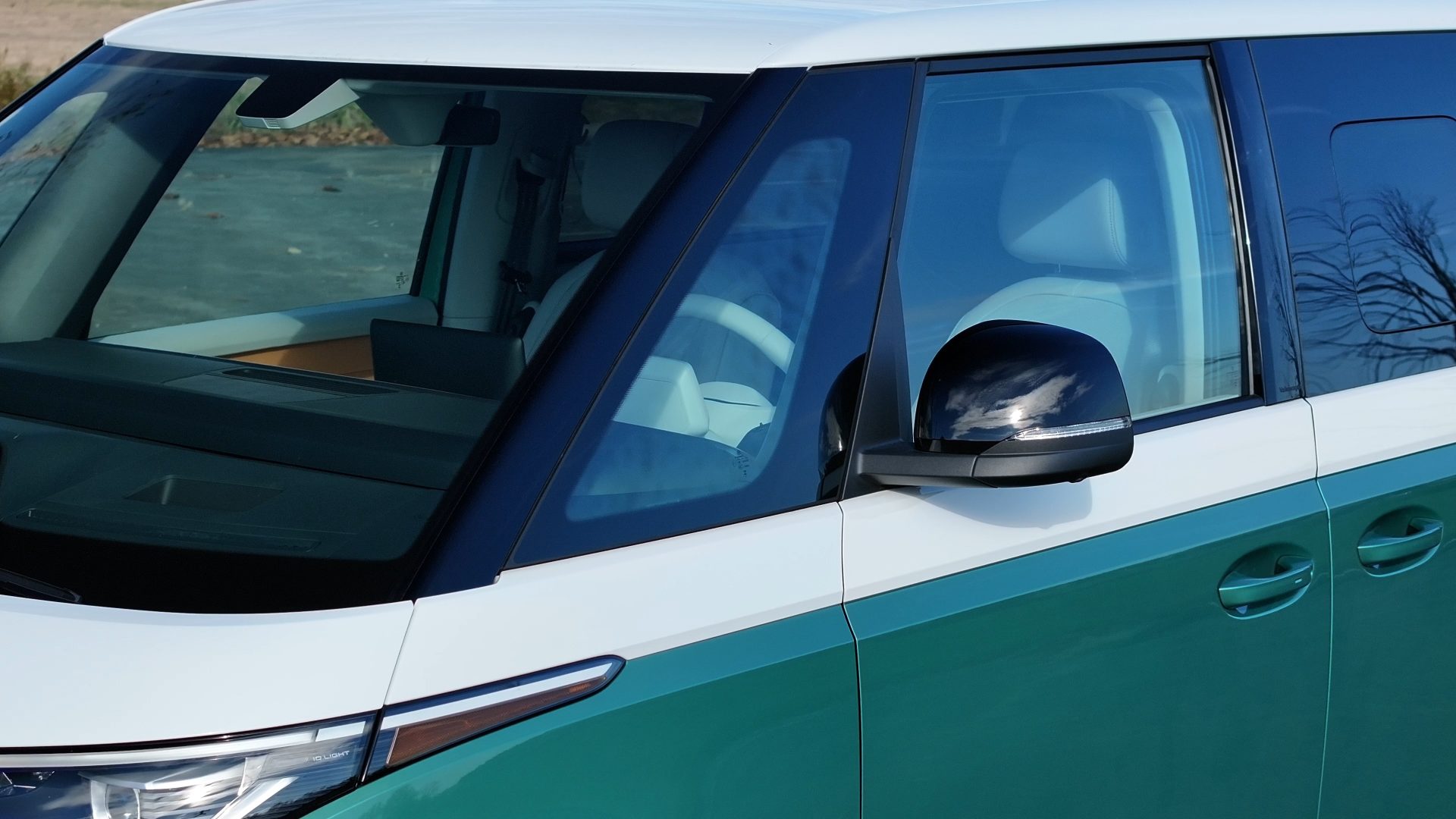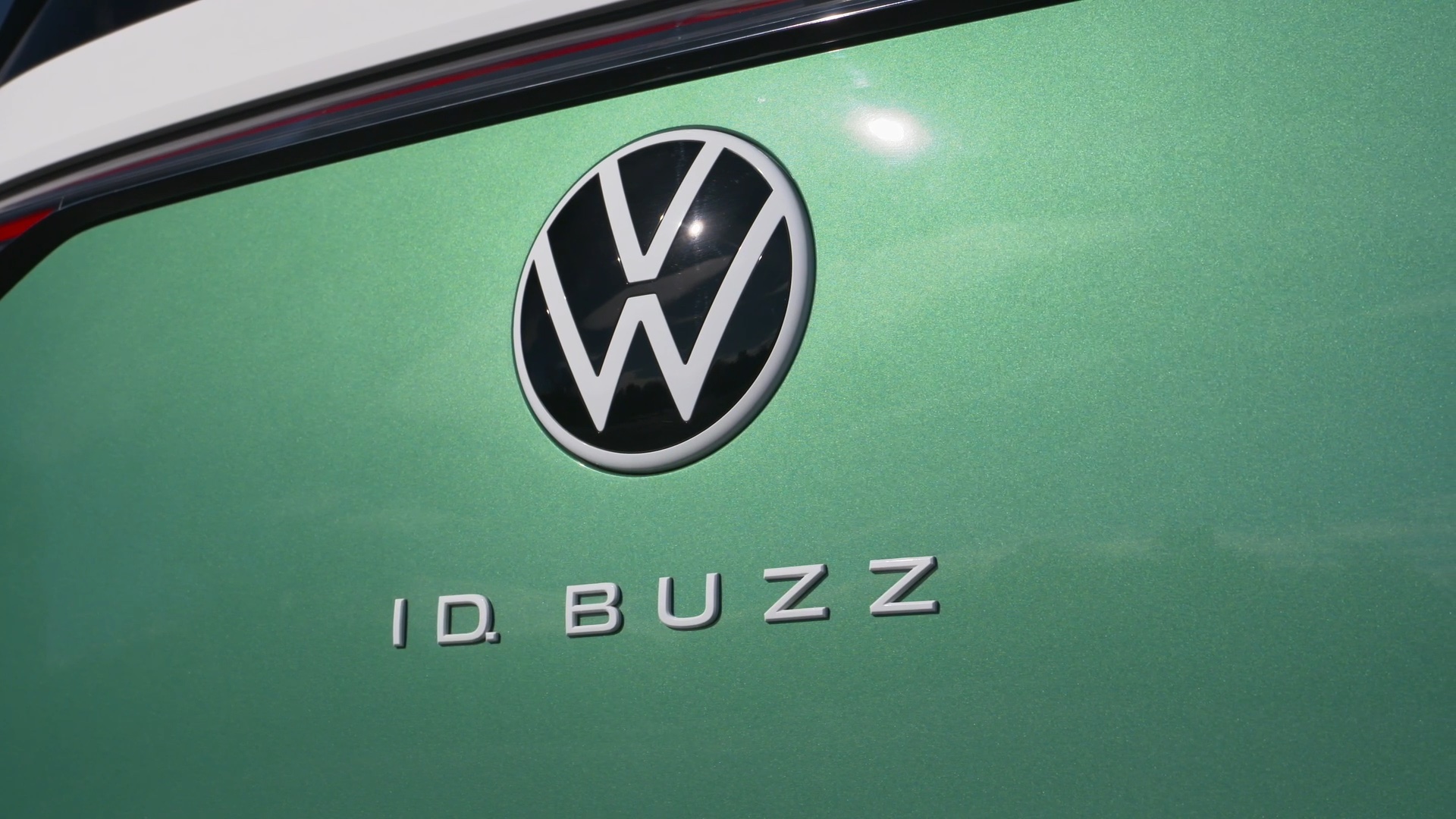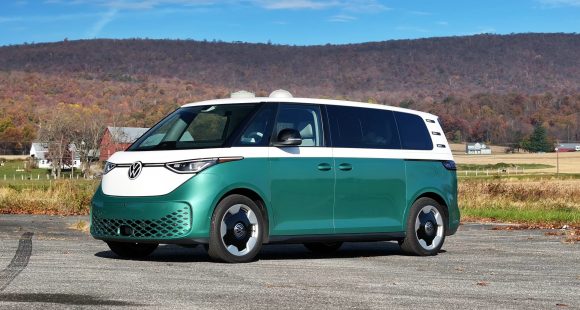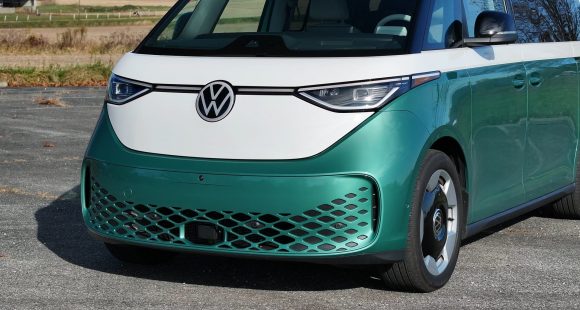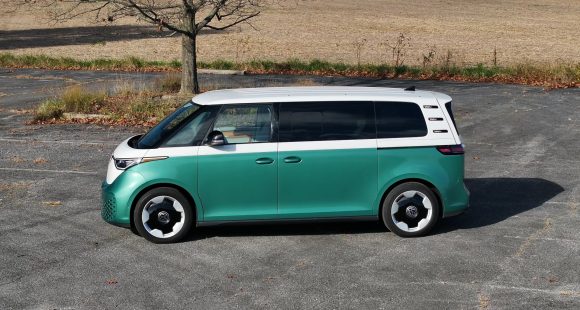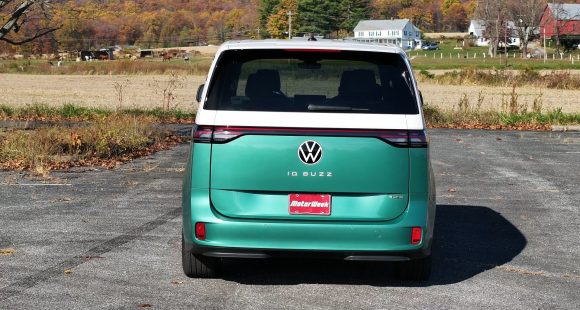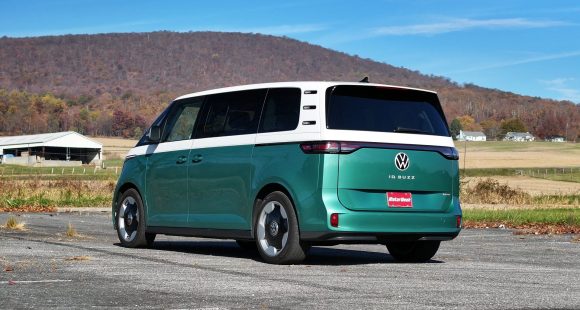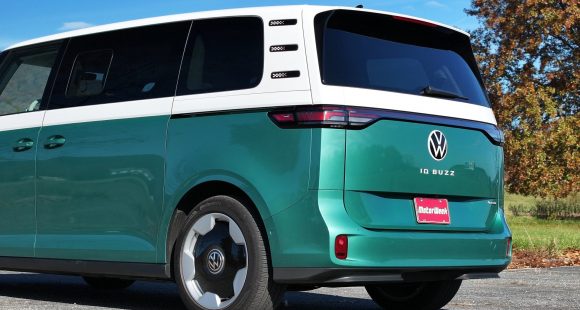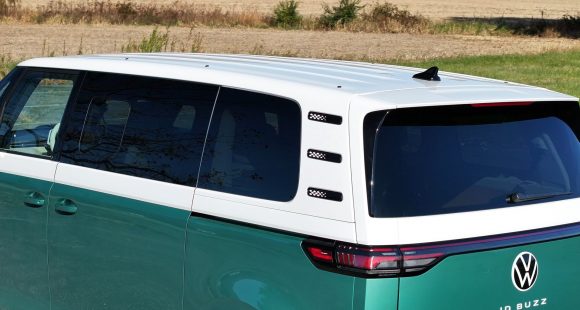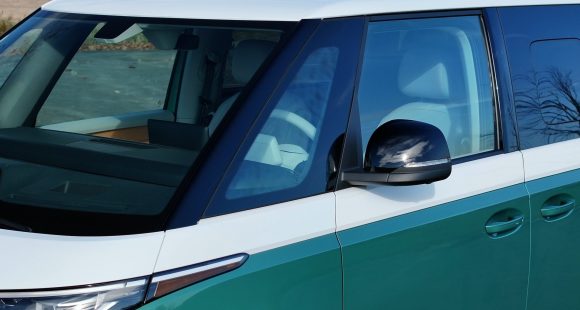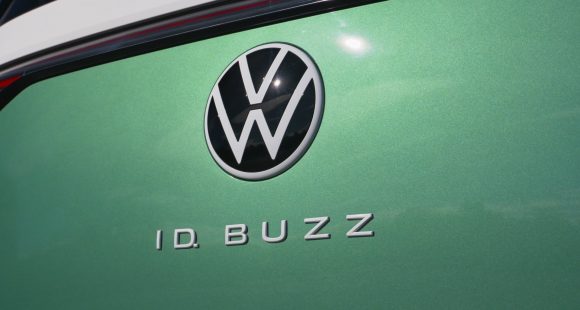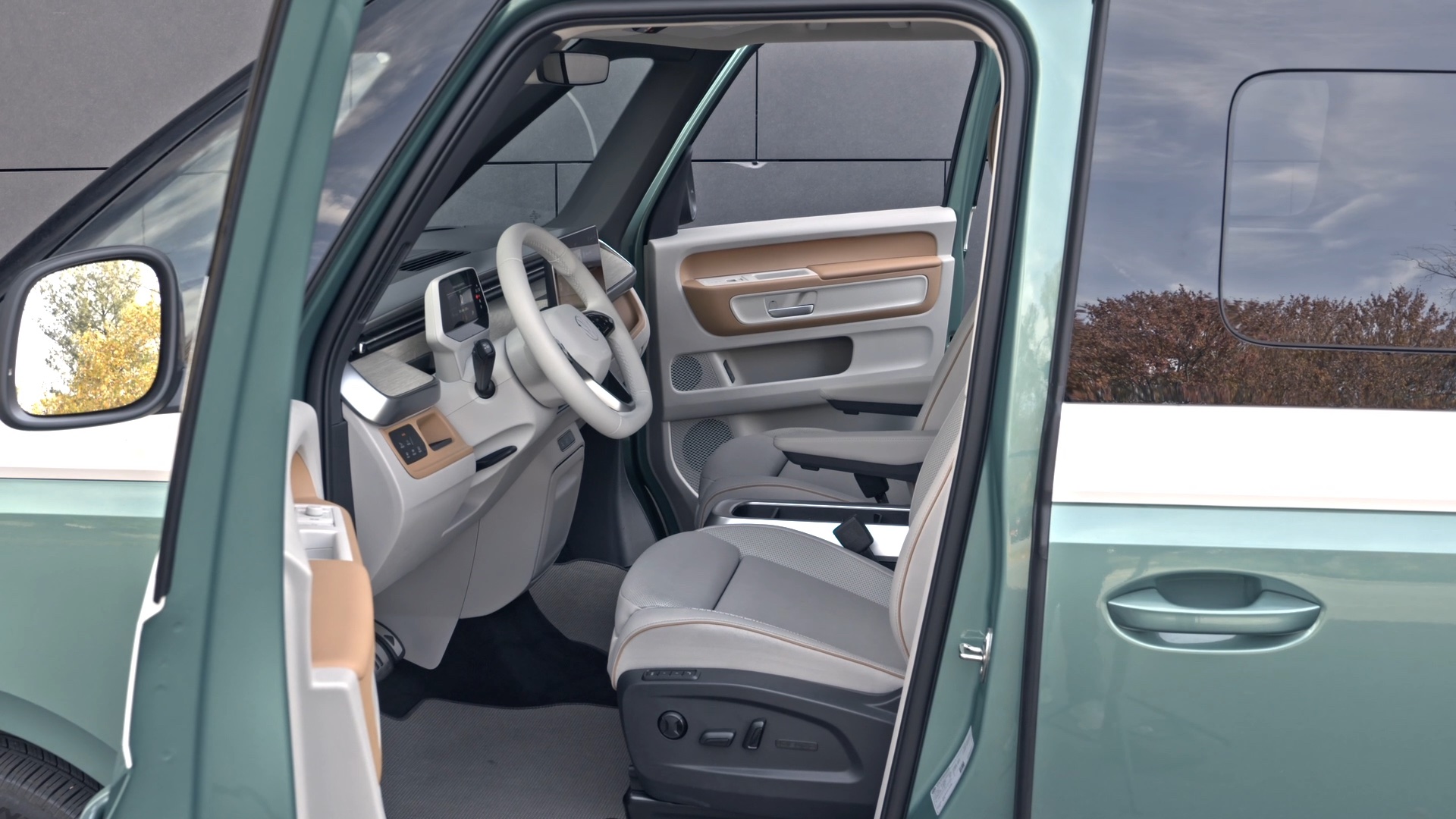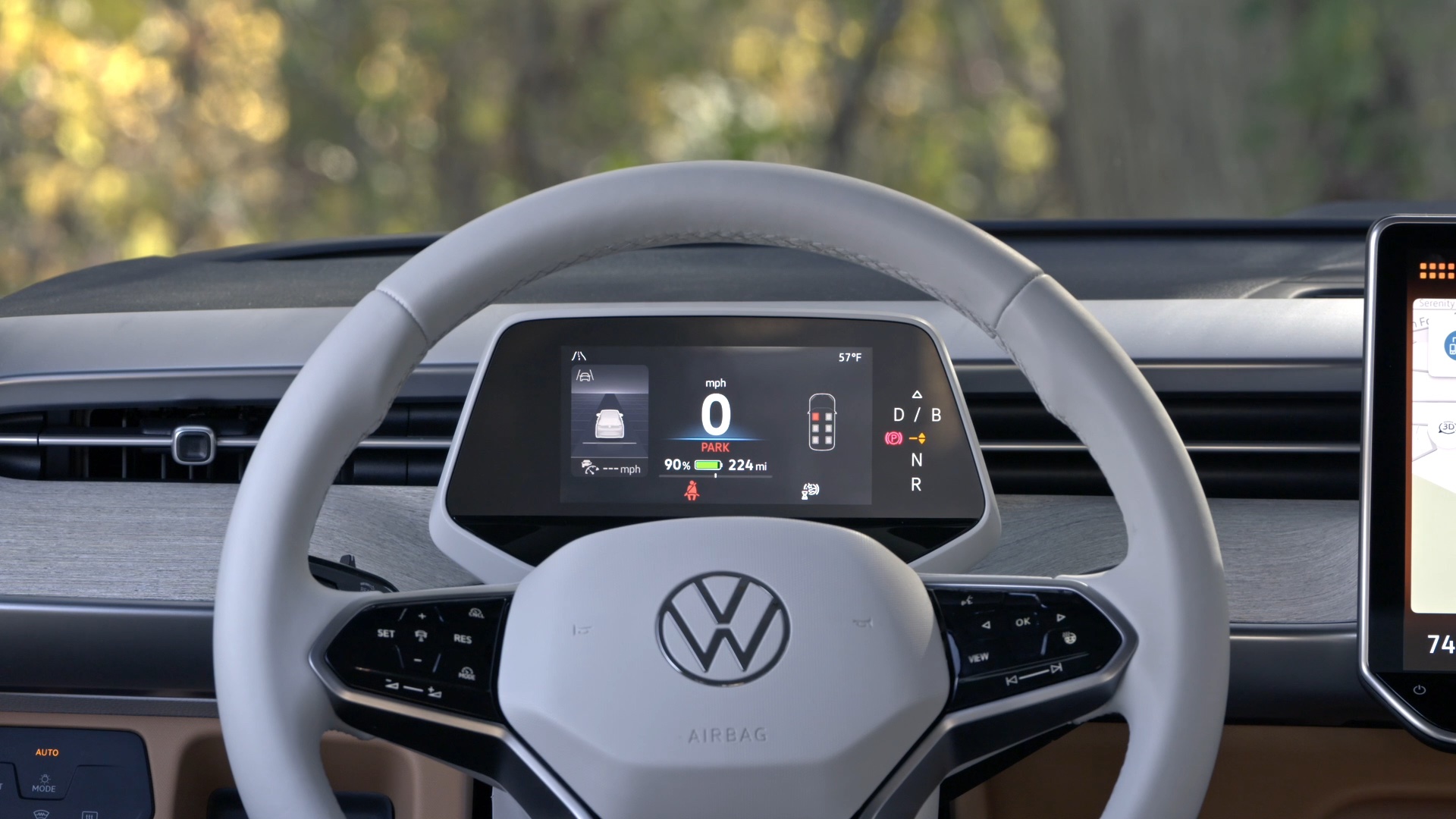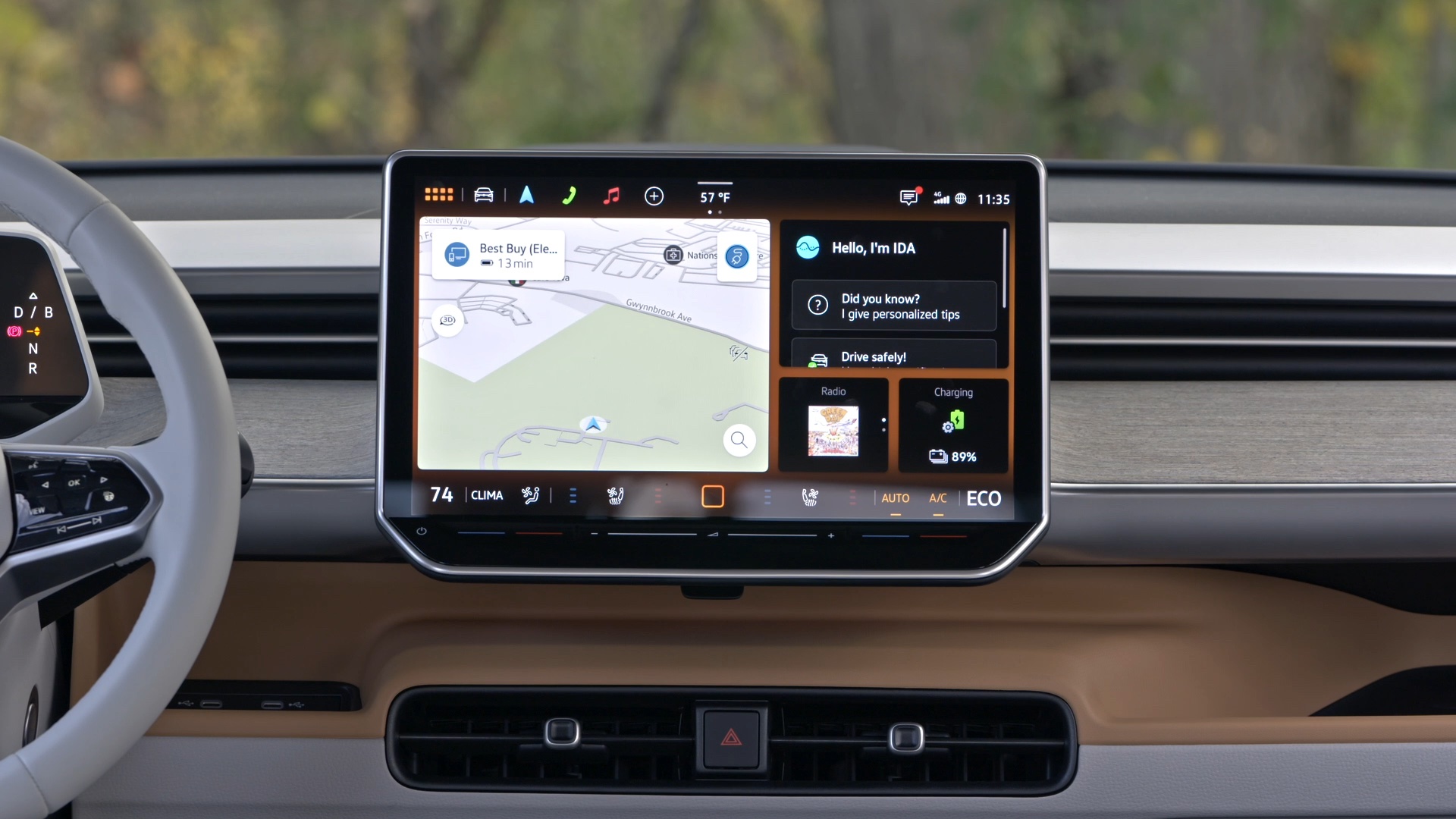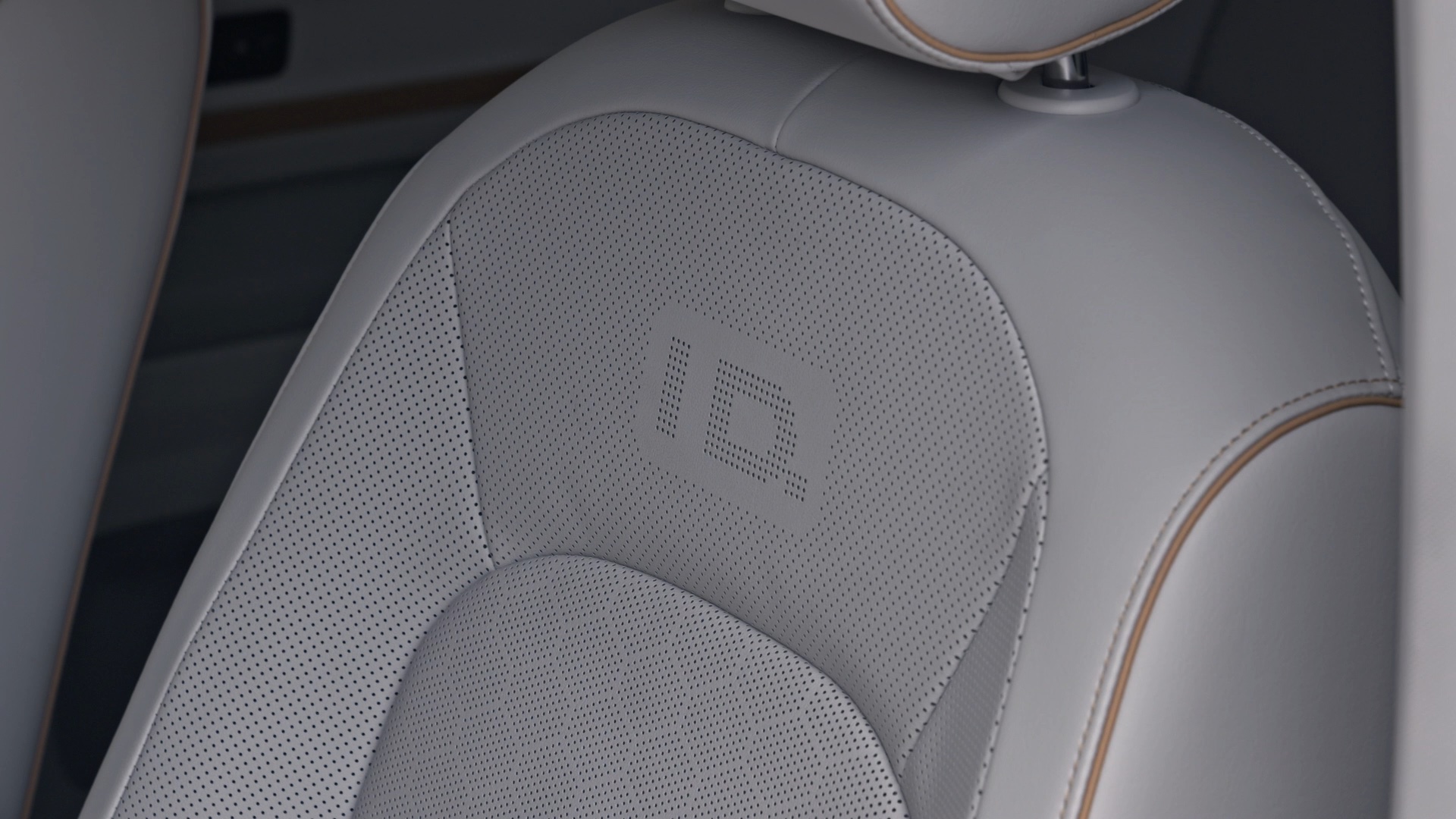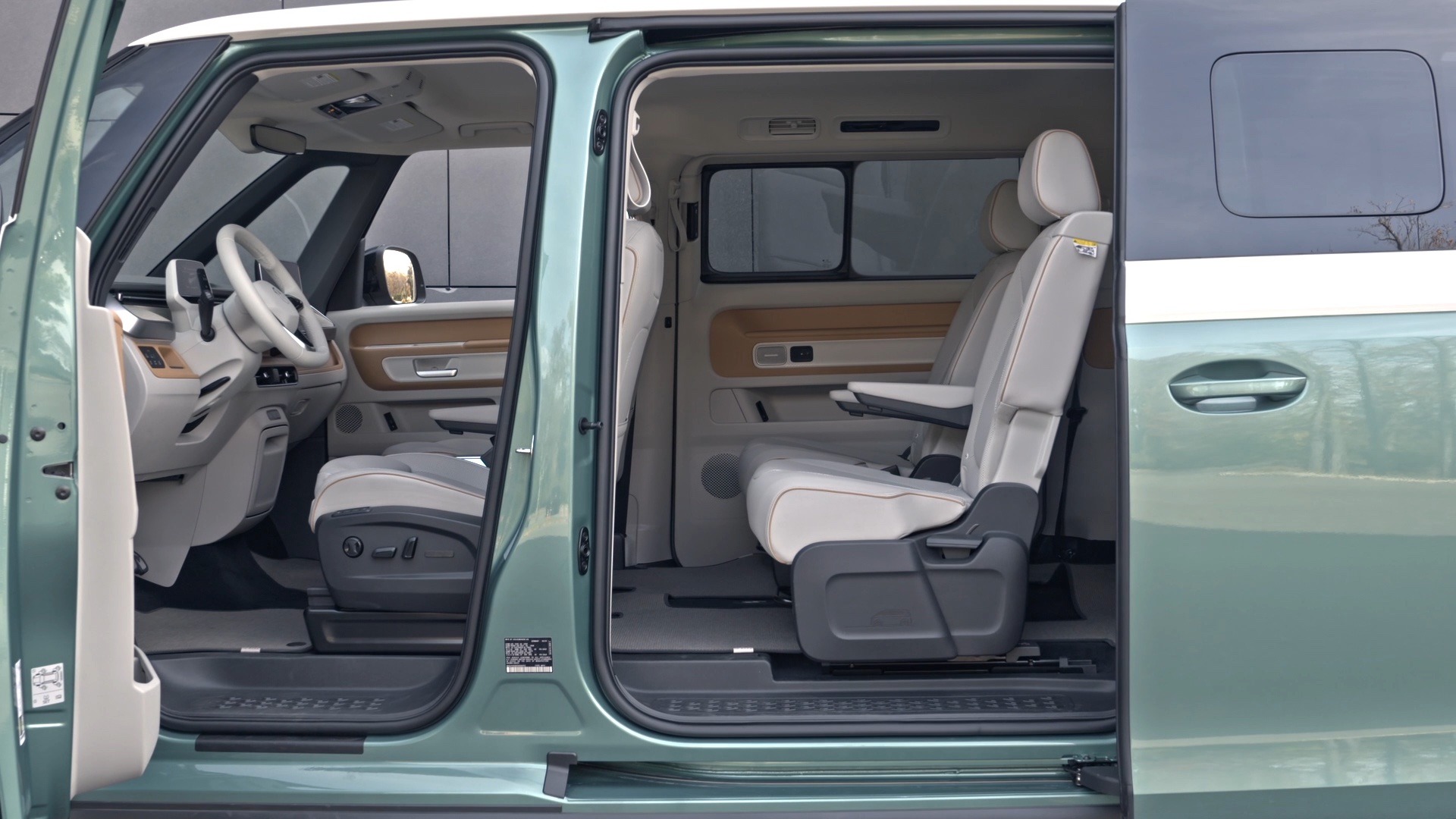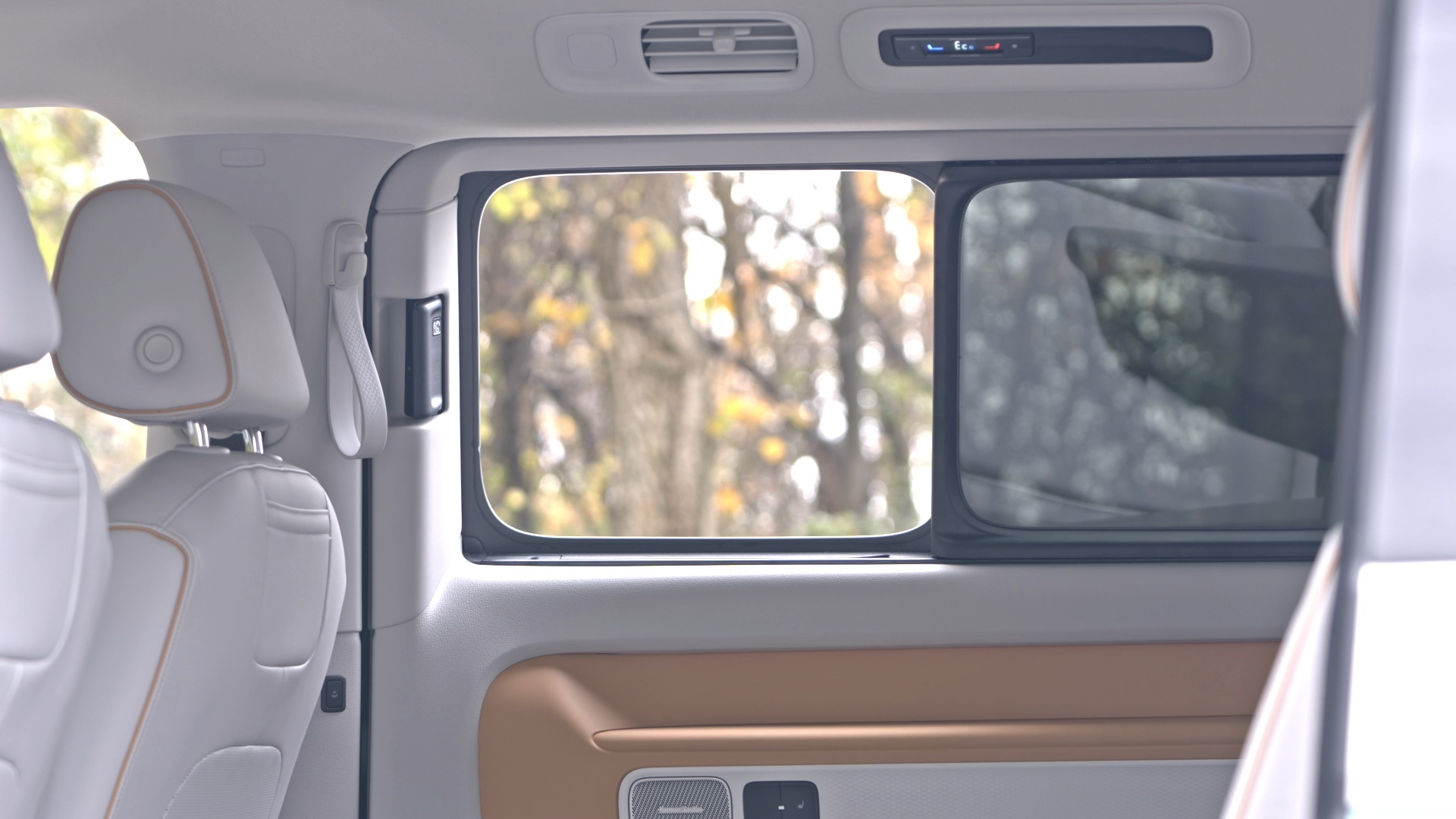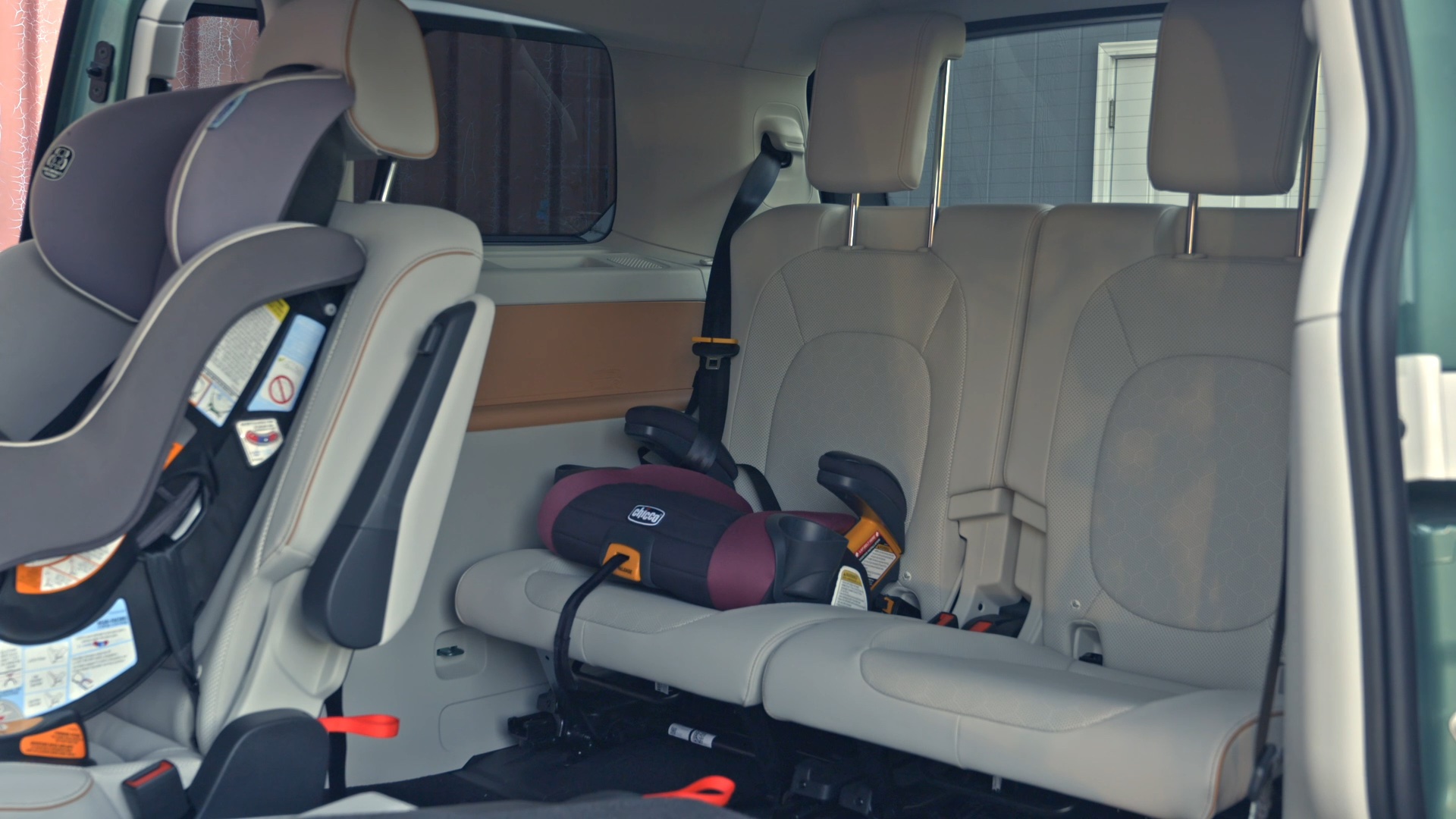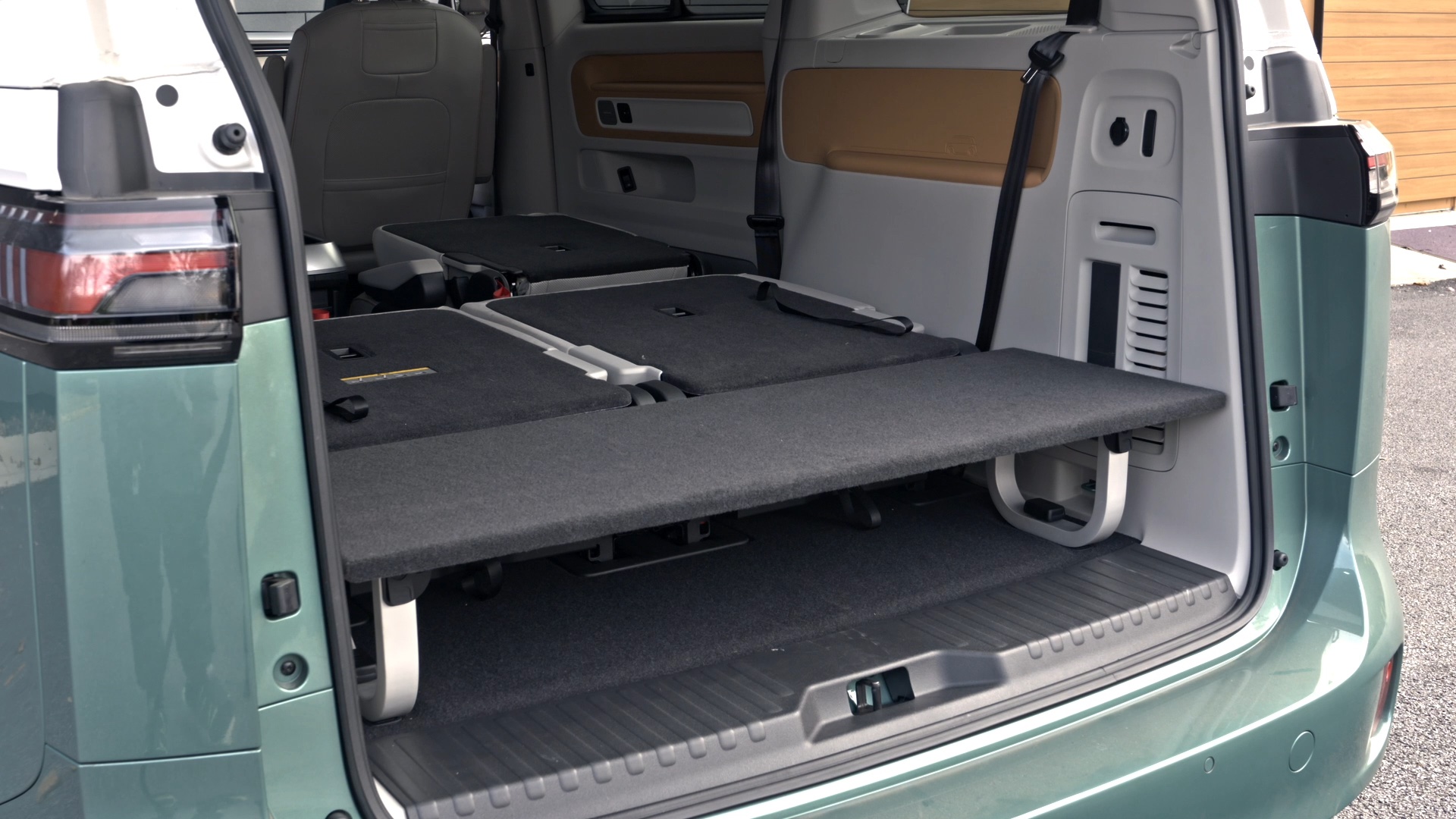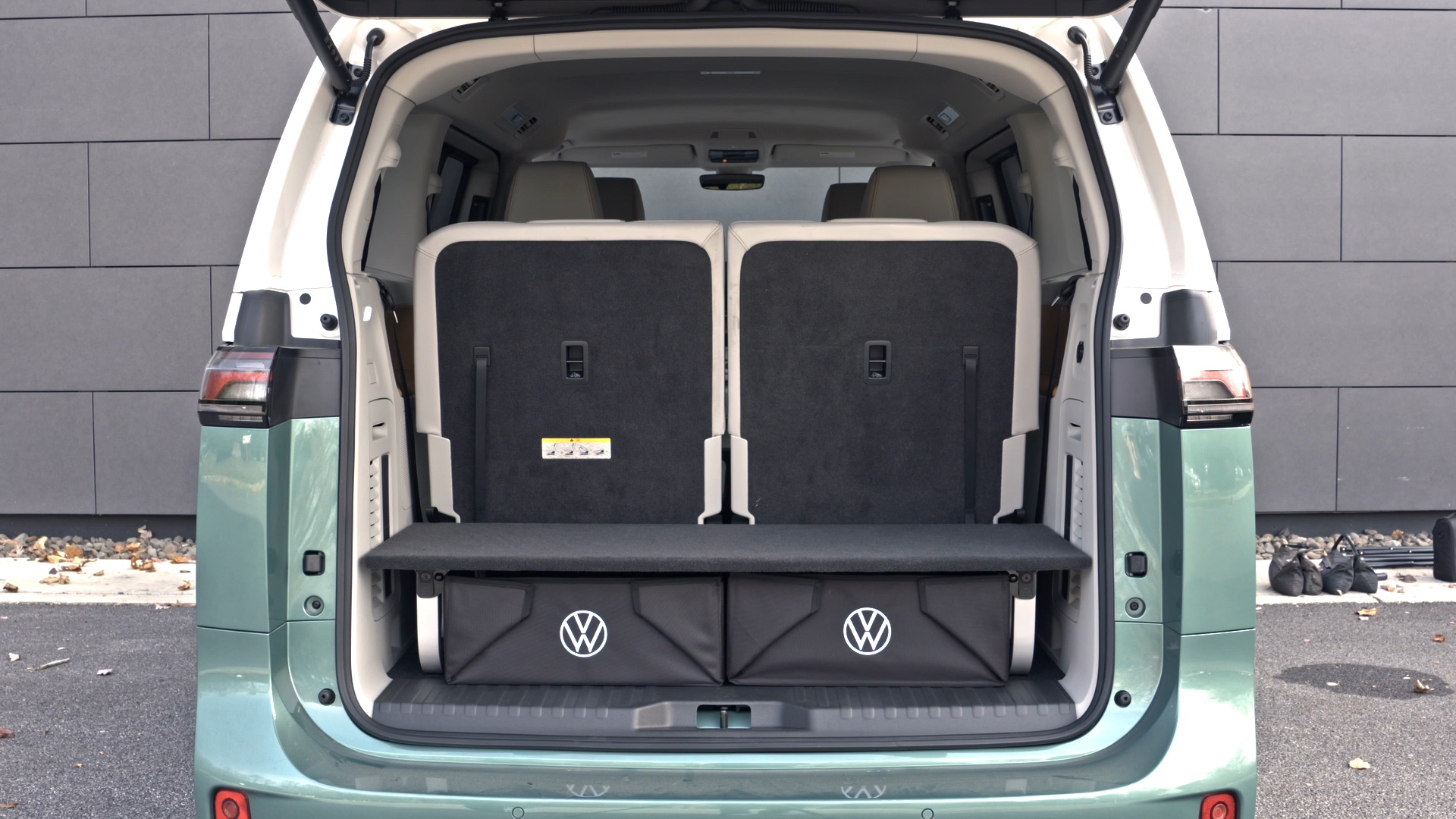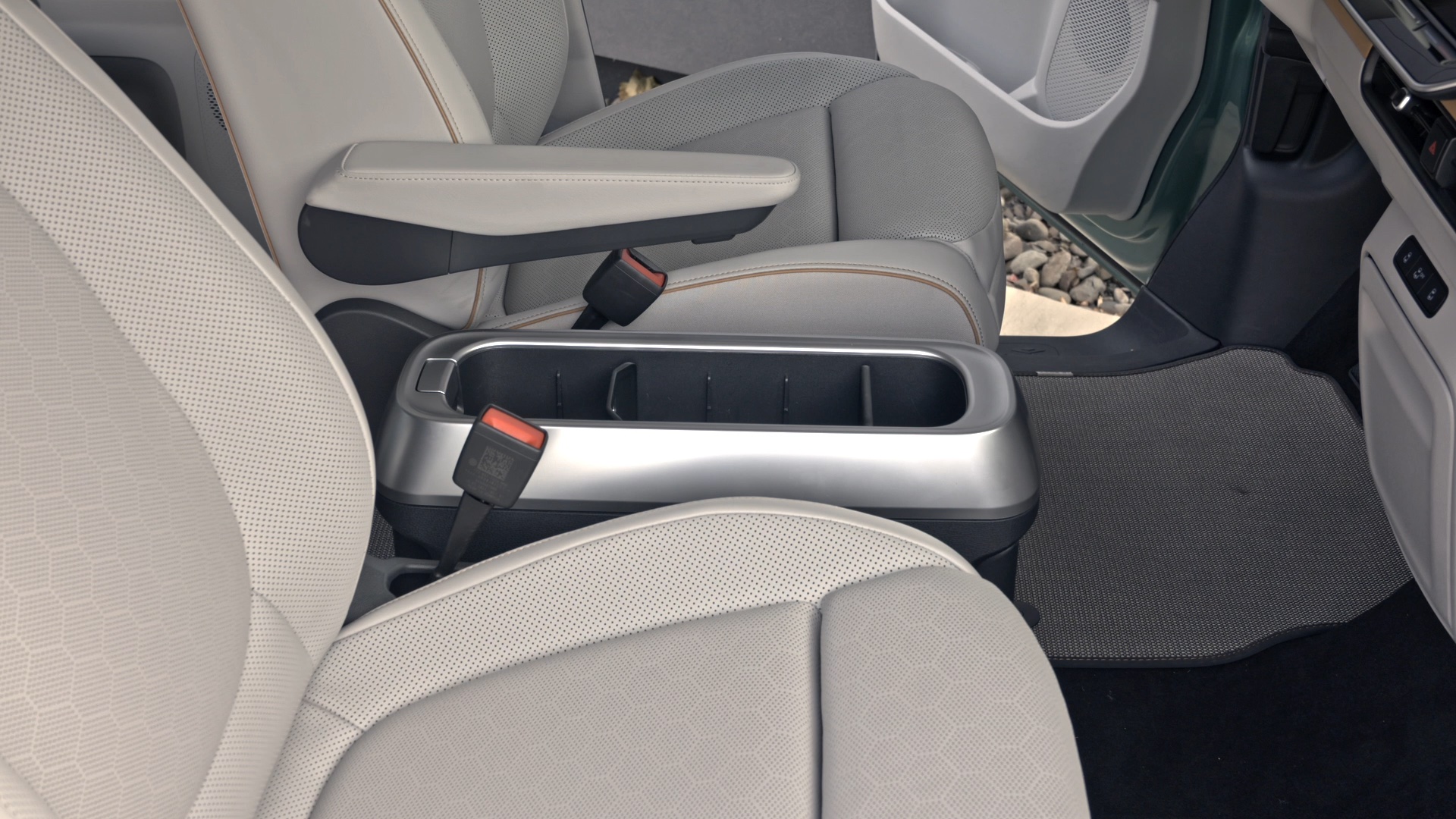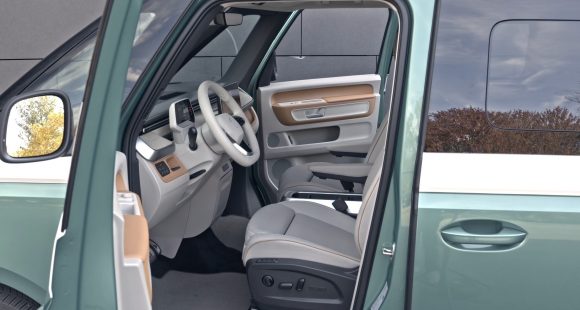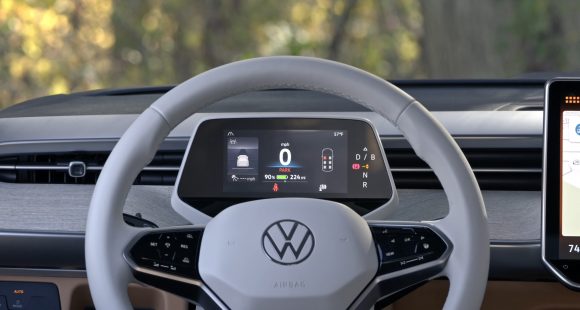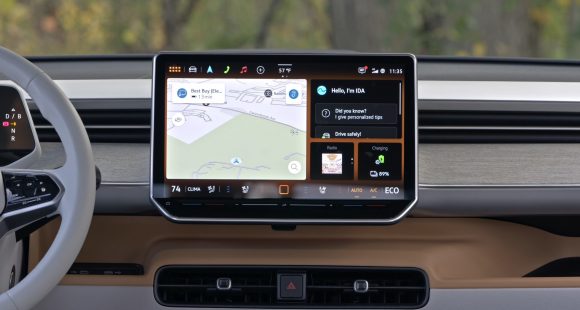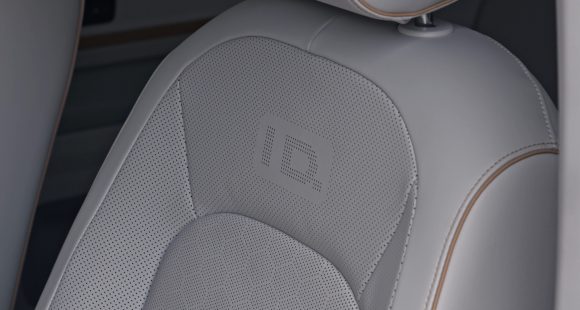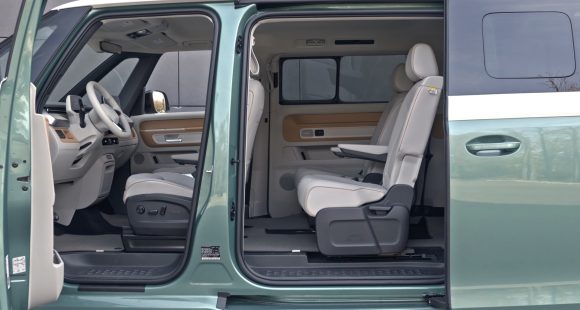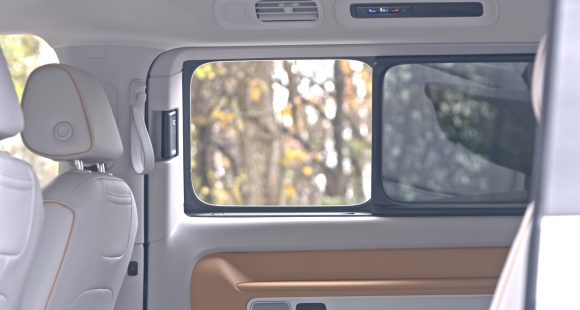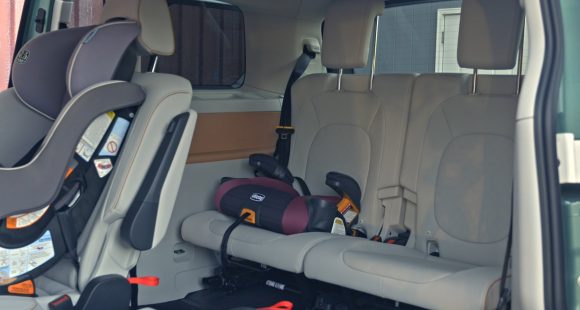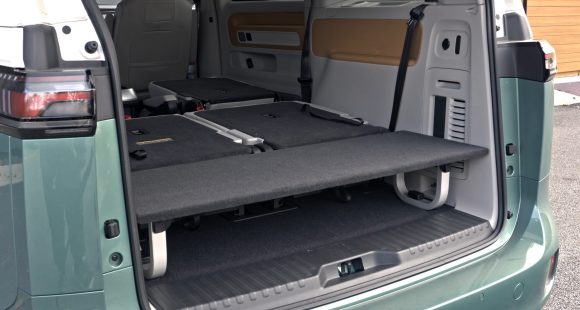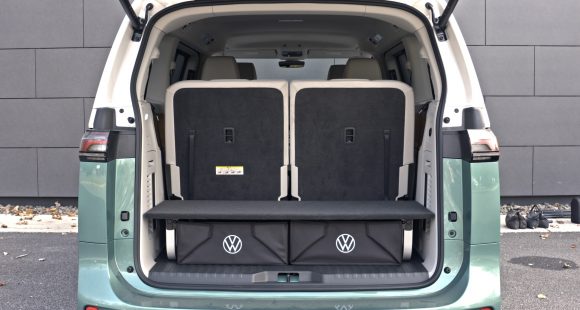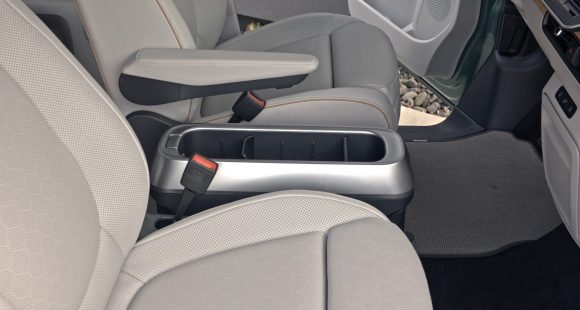In case there’s any doubt, the minivan is alive and well and parked in driveways all around America. And though they have been overshadowed by utilities big and small in recent years, trends show the minivan is making a bit of a comeback. So the time is right for a thorough revamping of the best selling minivan in the land, the Honda odyssey.
The first thing Honda hopes you will notice about the fourth-generation 2011 Odyssey is its more aggressive, and somewhat less boxy look. Riding on the same 118.1-inch wheelbase, it’s lower and wider, with lines that have more in common with the Mercedes-Benz R-Class than the previous Odyssey.
Up front; angular headlights flank a more Accord-like grille. The hood dives lower, and the windshield has a steeper rake, giving the Odyssey the hint of a sporting character. That impression is furthered by connected door handles, flared fender openings, and a dropped rear window beltline that Honda refers to as the ‘lightening bolt.’ A clipped rear, with taillights connected by trim and reflectors, also attempts to set this Odyssey above its more staid rivals.
But, as with all minivan, the main attraction to buyers is always the interior, and that 7 or 8-passenger space is more inviting than ever.  In keeping with the sportier theme, the instrument panel favors the driver. Overall fit and finish are typically Honda high. The tilt-and-telescoping steering wheel has standard audio and cruise switchgear on all but LX, and Touring trim adds nav and Bluetooth and wraps it in leather.
In keeping with the sportier theme, the instrument panel favors the driver. Overall fit and finish are typically Honda high. The tilt-and-telescoping steering wheel has standard audio and cruise switchgear on all but LX, and Touring trim adds nav and Bluetooth and wraps it in leather.
Center stack cup holders have morphed into accessory storage bins, and the optional cool box gets its chill directly from the A/C compressor, while rivals rely on ductwork.
Our Touring Elite test van is the most full-featured Odyssey. It’s the only trim with the new Blind Spot Information System, while standard navigation and Bluetooth are available at other levels. One welcomed edition for but Odyssey LX is a backup camera.
Honda has ditched the flip-up tray between the front seats and borrowed a Chrysler idea, a removable storage console. But Honda then added a convenient garbage bag holder.
The base LX Odyssey has dual manual sliding doors, and room for seven with second-row captain’s chairs. But all other trims- EX, EX-L, Touring, and Touring Elite- have power sliding doors and seating for eight. The three-mode second-row seat has a wider, sliding, removable center section that doubles as an armrest. Each outboard seat also adjusts laterally 1.5 inches so three child seats can be installed at once.
Our Touring Elite Odyssey had a 16-inch split screen ultra-wide rear entertainment system with HDMI port. It can handle two video sources at once. The second row also moves further forward than before to allow better access to the added legroom of the third-row split bench. There’s 38.4 cubic feet of cargo capacity behind that third row. Fold it into the floor for 93.1 cubic feet, seven more than the new Toyota Sienna. With the second row removed, the total is 148.5 cubic feet - just shy of the Sienna.
Pop the Odyssey’s creased hood and you’ll find a familiar 3.5-liter V6. But now all trims include fuel saving cylinder cutoff. Ratings are up a bit too, 248-horsepower and 250 pound-feet of torque. Maximum tow is unchanged at 3,500 pounds. Odyssey’s LX through EX-L shift with a five-speed automatic. Touring and Touring Elite add a new six speed.
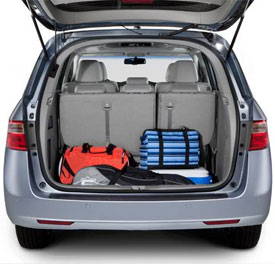 On our La Jolla ride and drive, we got to flog an Odyssey around an autocross course-not a minivan’s natural habitat. But the Odyssey is the only minivan with an independent rear suspension, and it exhibited crisp steering, with a very Accord-like nimble feel overall, and little top-heaviness. Driver aids include traction and stability control, all disc ABS, and even Brake Assist.
On our La Jolla ride and drive, we got to flog an Odyssey around an autocross course-not a minivan’s natural habitat. But the Odyssey is the only minivan with an independent rear suspension, and it exhibited crisp steering, with a very Accord-like nimble feel overall, and little top-heaviness. Driver aids include traction and stability control, all disc ABS, and even Brake Assist.
But, of more interest to most families will be the Odyssey’s highway frugality. Government Fuel Economy Ratings with a 5-speed are 18 City/27 Highway. The six-speed bumps it to 19 miles per gallon city and a class-leading 28 highway, all on regular gas.
The 2011 Odyssey LX starts for $28,580. That’s up about a grand. The EX starts at $31,730, and rises to a pricey $44,030 for the top Touring Elite.
We applaud Honda’s attempt to spiff up the minivan image. It can only help bring younger converts to the most versatile vehicle class even devised. Packaged with competent road manners, better economy, and 50 more amenities and features than last year, there is no reason that the 2011 Honda Odyssey won’t continue as the most coveted mommy-mobile in the land.
Specifications
- Engine: 3.5-Liter V6
- Horsepower: 248
- Torque: 250 Lb Feet
- 5 Speed EPA: 18 MPG City/ 27 MPG Highway
- 6 Speed EPA: 19 MPG City/ 28 MPG Highway
Long Term Updates
Mileage: 6,7000Our 2011 Odyssey Touring Elite has only been with us a couple of months, but 6,700 miles on its clock indicates it sees a lot of highway travel.
This is by far the most comfortable minivan on the road today. And just like Honda claims, quite fuel-efficient. With cylinder cutoff standard on its already able 248-horsepower 3.5-liter V6, we’re averaging 24.2 miles per gallon of regular. That’s excellent for any 8-passenger vehicle.
Plus, thanks to its very car-like ride and handling, the new Odyssey is drawing praise from even our most anti-minivan staffers.
Mileage: 8,000The perfect summer take-along is our 2011 Honda Odyssey minivan. From now ’til Fall, we expect lots of work and play will put over 15,000 new miles on our redesigned 7-passenger people mover. Top drawer Elite trim ensures a comfortable trip. So far the only negative we’ve noticed about accommodations is a too-narrow for size 12 feet driver’s foot well.
Seats on the other hand, are all day comfortable. You really notice how smoothly everything operates in the Odyssey, from folding down seats to transmission downshifts. Odyssey systems are well thought out and user-friendly. As the most efficient minivan in its class, its able 248-horsepower, 3.5-liter V6 is returning 22.4 miles-per-gallon of regular after 4 months and 8,000 miles. That’s about 10 percent better than rivals.
Mileage: 8,000+Minivans are making a comeback, supposedly, as a lower cost alternative to crossover utilities. But if our staff’s reaction to this 2011 Honda Odyssey is any indication, a new generation is discovering that no vehicle is more versatile than a minivan.
Our Touring Elite has enough room for a family of eight, or remove and fold the seats for a load floor that’s longer than all but the biggest pickup trucks.
And few pickups approach the efficiency of the Odyssey, the most gas stingy in its class. Our average has climbed to 23.7 miles per gallon. The Odyssey’s strong, 248-horsepower, 3.5-liter V6 has standard cylinder cut-off that works nearly invisibly.
After five months the only dealer stops have been for oil changes, and the only operator complaints are that the driver’s foot well is on the narrow side, and there’s not enough front seat travel.
Mileage: 17,000Minivans are made for summer vacations, and since Memorial Day, our 2011 Honda Odyssey Touring Elite has been constantly holiday bound. No wonder we’ve racked up nearly 17,000 miles in only 6 months! But, with 24.0 miles per gallon of regular, it’s been pretty painless given this big people mover’s capacity and versatility.
Two family friendly features we appreciate are the removable front console that allows for extra luggage space and easier access to the kids in the second row. And the headphones for the rear seat DVD entertainment system automatically turn off when not in use to conserve the batteries.
Just more reasons why the Honda Odyssey is the best thing since sunscreen for summer vacation.
Mileage: 20,000Now that summer is over you might think our 2011 Honda Odyssey minivan would get a break. Not so. Between back to school trips and weekend getaways, not to mention crew duties, its still in high demand.
Fuel economy is one reason why the Odyssey is so popular. After 9 months and 20,000 miles, we’re averaging 23.4 miles per gallon of regular. However, on long trips 28 is routine.
Versatility is another reason. The rear seats fold in a snap. There are storage bins everywhere. The grownups up front ride in good comfort, unless you’re quite tall, while those in the rear can be well entertained.
At a cost, that is. While the Odyssey starts at a reasonable $28,000, our top drawer Touring Elite is closer to $44,000. Still, buyers tell us they love their Odyssey and so do we.
Mileage: 23,000There are a lot of reasons why the Honda Odyssey is one of the most popular minivans year after year.
Be it around town or on interstates, the Odyssey is easy to handle with a great ride. We’ve complained before about cramped front seat foot wells, but that’s only a minor annoyance.
Excellent fuel economy is another reason why the Odyssey rates high. After 11 months and over 23,000 miles, we’re averaging 23.7 miles per gallon of regular. However, on long trips 28 is routine.
Our Odyssey’s good fuel economy benefits from both cylinder cutoff and a locking torque converter. And you do feel both when they cut in and out, but again it’s not truly intrusive.
Minivans are naturally versatile. Still, our Odyssey shines in the ease of converting people space to cargo room.
As minivans go, the Honda Odyssey deserves its primo status.
Mileage: 24,000Speaking of typical minivans, if you do go that route, we think the Honda Odyssey is this year’s pick of the litter.
From people to cargo, from around town to cross country, our Drivers’ Choice Winner does it all in a comfortable, secure, and thrifty manner that typifies the Honda brand.
Fuel economy from the strong 3.5-liter V6 is commendable at 23.6 miles per gallon of regular after almost a year and 24,000 miles.
We’ve had no mechanical faults and complaints are mostly about tight foot wells and too many center dash controls looking or feeling the same.
Still, we’ll pick the Honda Odyssey for our personal odysseys anytime.
Mileage: 25,000While most of us took off work for the holidays, our Honda Odyssey Minivan did anything but; carting friends, families, pets, and presents over many a hill and dale.
In top-line Touring Elite trim, it was all done with total comfort and the great sounding stereo and rear DVD system kept everyone happy.
Nothing new to add to our few gripes; more front legroom is needed and the heavy middle row seats are a pain to remove and store.
But, all is forgiven with 24.6 mile per gallon of regular fuel economy over a year and some 25,000 miles. This is one efficient big hauler. And the stout 3.5-liter V6 with cylinder cutoff never misses a beat, although we are noticing the transmission’s torque converter locking and unlocking more than before.
We picked the Odyssey as a Drivers’ Choice winner a year ago and we’re glad we did.
For two years in a row MotorWeek has selected the Honda Odyssey as our Drivers’ Choice Best Minivan. And, for the last 14 months, we’ve been selecting our long term 2011 Odyssey Touring Elite as the vehicle of choice for carrying big crews and families. Now, as with all good things, our Long Term Test of the Odyssey has come to an end.
As to the statistics; after 23,831 miles our average fuel economy stands at 24.4 miles per gallon of regular. That jives with the Odyssey’s class best Government Fuel Economy ratings.
Our van’s 248-horsepower V6, with cylinder deactivation and a 6-speed automatic, was well up to any task and highway passing is a breeze. The only thing we noticed towards the end of the test was some roughness from the tranny’s torque converter.
Otherwise our “things gone wrong” sheet is blank. The two other issues we have were there at the start; the heavy middle row seats are cumbersome to remove and store, and we’d like more front legroom, especially on the passenger side.
Everyone that rides in the Odyssey is impressed with seating comfort. The instrument panel is handsome and we’ve gotten used to using the central controller for many tasks. As for those in the back, between a great sounding stereo and DVD video, there’s plenty to keep them occupied.
Any guy who calls minivans “mommy-mobiles” has never had the pleasure of using one for bulk cargo hauling, or even as a low floor mobile work space. Minivans are clearly the most versatile vehicles out there. And, in our case, the Honda Odyssey gets a grade of A+.







 In keeping with the sportier theme, the instrument panel favors the driver. Overall fit and finish are typically Honda high. The tilt-and-telescoping steering wheel has standard audio and cruise switchgear on all but LX, and Touring trim adds nav and Bluetooth and wraps it in leather.
In keeping with the sportier theme, the instrument panel favors the driver. Overall fit and finish are typically Honda high. The tilt-and-telescoping steering wheel has standard audio and cruise switchgear on all but LX, and Touring trim adds nav and Bluetooth and wraps it in leather. On our La Jolla ride and drive, we got to flog an Odyssey around an autocross course-not a minivan’s natural habitat. But the Odyssey is the only minivan with an independent rear suspension, and it exhibited crisp steering, with a very Accord-like nimble feel overall, and little top-heaviness. Driver aids include traction and stability control, all disc ABS, and even Brake Assist.
On our La Jolla ride and drive, we got to flog an Odyssey around an autocross course-not a minivan’s natural habitat. But the Odyssey is the only minivan with an independent rear suspension, and it exhibited crisp steering, with a very Accord-like nimble feel overall, and little top-heaviness. Driver aids include traction and stability control, all disc ABS, and even Brake Assist.